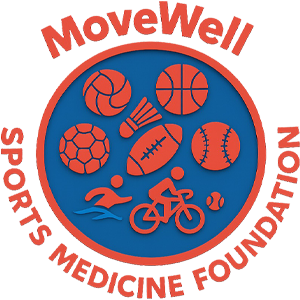Although swimming is a low-impact sport, its repetitive motions and aquatic environment can still lead to specific injuries. Here are the most common swimming-related injuries and how to prevent them:
1. Shoulder Injuries (Swimmer’s Shoulder)
Causes:
Overhead motions in freestyle and butterfly strokes can cause shoulder impingement or rotator cuff tendinitis.
Poor shoulder stability leads to muscle imbalances and strain.
Symptoms:
Pain when lifting the arm (especially during recovery phase)
Reduced range of motion, nighttime discomfort
Prevention & Recovery:
✅ Strengthen rotator cuff muscles (band external rotations)
✅ Improve stroke mechanics (avoid excessive internal rotation)
✅ Ice + NSAIDs (for acute inflammation)
2. Knee Injuries (Breaststroker’s Knee)
Causes:
The whip-kick motion in breaststroke stresses the medial collateral ligament (MCL) and meniscus.
Symptoms:
Inner knee pain during or after swimming
Clicking or locking sensation during kicks
Prevention & Recovery:
✅ Strengthen quadriceps & hamstrings (wall sits, leg curls)
✅ Modify kick technique (avoid excessive outward rotation)
✅ Use a kickboard (to reduce knee load)
3. Lower Back Pain (Butterfly Back Strain)
Causes:
The undulating motion in butterfly and backstroke increases lumbar spine stress, risking disc issues or muscle strains.
Symptoms:
Dull or sharp lower back pain (worse when arching)
Possible radiating nerve pain (sciatica-like symptoms)
Prevention & Recovery:
✅ Core strengthening (planks, dead bugs)
✅ Avoid hyperextension (engage abs during strokes)
✅ Dynamic stretching (cat-cow, hip flexor stretches)
4. Neck Strain (Freestyle Neck Pain)
Causes:
Repeated head rotation for breathing in freestyle can strain cervical muscles or irritate spinal joints.
Symptoms:
Stiffness and pain when turning the head
Possible tension headaches
Prevention & Recovery:
✅ Bilateral breathing drills (reduce one-sided stress)
✅ Neck stabilization exercises (resistance band work)
✅ Heat therapy + gentle stretches (relieve tightness)
5. Skin & Ear Issues
Common Problems:
Swimmer’s ear (Otitis externa) – Infection from prolonged water exposure.
Chlorine rash / Dry skin – Chemical irritation from pool water.
Prevention Tips:
✅ Use silicone earplugs
✅ Rinse thoroughly + moisturize post-swim
✅ Opt for saltwater pools or open-water training
Key Takeaways: How to Swim Safely?
Perfect Your Technique – Work with a coach to fix flaws (e.g., dropped elbow, over-kicking).
Strength Training – Focus on rotator cuff, core, and leg stability.
Recovery Matters – Post-swim mobility work (pec stretches, shoulder rolls).
Progress Gradually – Avoid sudden increases in yardage (max +10% weekly).
Swimming is a lifelong sport—smart training minimizes injury risk and maximizes performance! 🏊♂️💪




